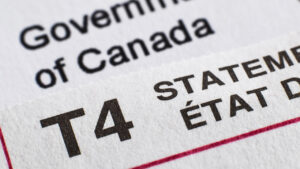Canada’s taxation system requires employers to remit payroll taxes on behalf of their employees. These taxes include Canada Pension Plan (CPP) contributions, Employment Insurance (EI) premiums, and income tax deductions from employee paychecks.
The collected amounts are remitted to the Canada Revenue Agency (CRA), ensuring compliance with Canada’s tax laws. This article breaks down the steps and methods to remit payroll taxes in Canada, along with the timelines and key considerations for businesses.
Understanding Your Remittance Schedule
- Determine Your Remitter Type: The CRA categorizes employers into different remitter types based on the average monthly withholding amount (AMWA). This classification dictates the frequency of your remittances.
- Remittance Due Dates: The remittance to the CRA is due by the 15th day of the month following the month in which the payroll was processed. For instance, if the pay period ends on January 31st, the remittance is due by February 15th.
Registration and Account Set-Up
- Obtain a Business Number (BN): To run payroll, you need a Business Number and a payroll program account through the CRA.
- Setting Up a CRA Payroll Program Account: Establishing a payroll program account with the CRA is crucial for reporting each employee’s income and tax remittance on T4 or T4A slips before the last day of February of the following year.
Remitting Payroll Taxes
- Electronic Remittance:
- Beginning January 1, 2024, electronic remittance is mandatory for payments exceeding $10,000.
- Electronic remittance can be done via My Business Account or Represent a Client on the CRA website.
- TeleReply Service:
- Employers can report a nil remittance by calling the automated TeleReply service at 1-800-959-2256.
- At a Canadian Financial Institution:
- Employers can remit payroll taxes at a Canadian financial institution using an original paper remittance voucher. Photocopies and faxes are not accepted due to a micro encoding feature required to process the payment.
- Mail:
- Regular or quarterly remitters can report a nil remittance by mail using Form PD7A, Statement of account for current source deductions, or by writing a letter to the CRA.
Correcting Remittance Errors
- Addressing Under or Over-Remittance:
- Corrections can be made if you have under-remitted or over-remitted. The process and implications are outlined on the CRA website.
Final Thoughts
Understanding the various methods and requirements for remitting payroll taxes in Canada is pivotal for businesses to ensure compliance. Adhering to the specified timelines, correctly calculating the remittances, and choosing the appropriate remittance method are crucial steps in this process.




